
STACKING
ANTENNAS
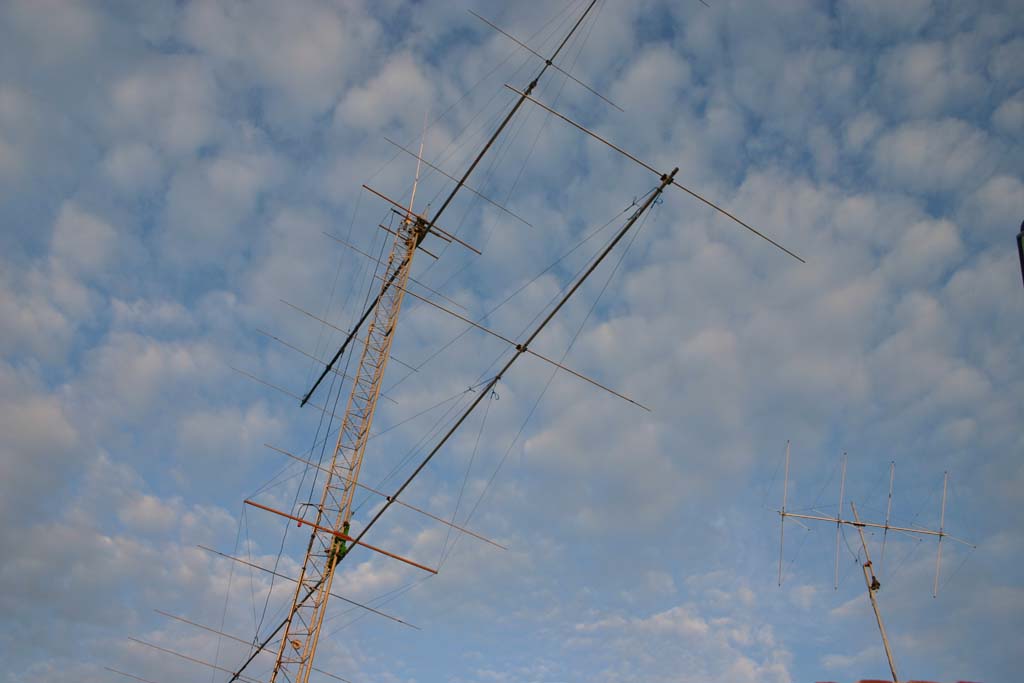
19AT091
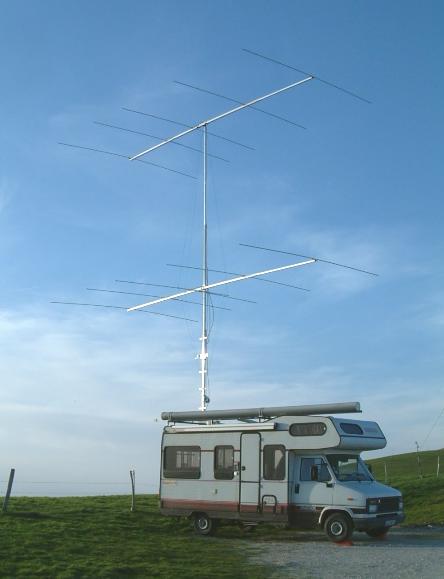
14 PM 74 / M
Stacking
antennas comes down to: combining two or even more than two antennas
together so that they together form an Array.
All the antennas in the Array are putting in the same amount of effort
to achieve a stronger signal than the single individual.
There are
often stories told about how you should stack antennas, also often this
is done by people who have never done this .
By them self, in my experience it is not so straight forward as many
people think.
You have to keep in mind all different factors like: gain, the take-off
angle, Front to back (side) etc. So be aware it is hardly the effort
to start this. Unless you know what your doing and you have done serious
thinking and calculation about the system keeping in mind all these
individual factors.
STARTING
WITH THE GAIN.
Often heard is: "stacking will provide you 3 dB"', more likely
it is in the order of 2,7 dB when done CORRECT.
Under perfect conditions we could reach 3 dB but in real live, this
will not be the smart way or will not be possible. First of all you
will have to deal with loss in connectors, cables etc. This will lower
the Gain in first place.
But more disappointing is the side-lobs which are brought up as soon
as we start stacking. To keep them down we shall take the -16 dB side
lobs for granted and be happy with the 2,7dB gain of the stack. (to
bring the side lobs down the gain must be reduced!)
So only half an S-unit profit with a stack? as earlier mentioned 6dB
was 1 S-unit.
No, the same mysteries hangs around stacking as it does with a Quad
it tends to be a bit more.
We have had situations in the past in which the difference went up to
2 to 3 S-units. A few months ago with Eric on Backscatter there was
a greater difference noticeable.
Say we
wanted the same gain as we are reaching in the stack But then with a
single yagi.
Imagine we already have a single yagi with a boom length of 20 meters
(approx 9 elements yagi) and wanted to improve the system by 3 dB, you
would have to double the boom length or.... get a stack to provide you
the gain you wanted.
This is a main reason for stacking, another advantage is you can make
more use of your beam width which is handy for contesting.
IN
WHICH WAY?
In big lines, there are two ways to stack antennas one is putting the
antennas above each other, the second is putting the antennas next to
each other.
Since we produce an additional gain with stacking there must be somewhere
we decrease the beam with of the array (that was where the gain came
from).
The gain reached in the stack was almost 3 dB this will resolve in dividing
the beam width in half.
When we stack the antennas above each other the gain is squeezed from
the vertical beam with, so the vertical beam with is divided in two.
In this case it has no consequents for the horizontal beam with. (When
aiming the yagi in the right direction you will not notice a "sharper"
pattern.)
The opposite happens when we place beams next to each other. You will
achieve the same gain as in the other, but the gain then comes from
somewhere else: the horizontal beam with so you will have to aim more
carefully. This can cause for some trouble, you just might miss the
station which is 20 degrees to the right form the main lob!.
Most commonly used is the first solution ....above each other. There
are probably two reasons for this.
The mechanical problems are more easy to overcome, when compared to
the side to side configuration.
The signal still has the same horizontal beam with so even with great
gain you can still aim the Yagi's rough.
THE BIG STACKING ADVANTEDGE.
The big advantage lies to my opinion not in the < 3 dB gain but in
the capability with an additional switch to switch between the take-off
angle.
We learned in the chapter basic that the take-off angle together with
the gain, were the reason why your signal came down at a
receiver location.
What you see here is a stacked array which exist from 2 times a 5 elements
yagi. These antennas are placed 10 and 20 meters above the ground.
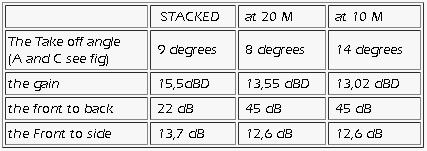
STACKED
at 20 M at 10 M
The Take off angle
(A and C see fig) 9 degrees 8 degrees 14 degrees
the gain 15,5dBD 13,55 dBD 13,02 dBD
the front to back 22 dB 45 dB 45 dB
the Front to side 13,7 dB 12,6 dB 12,6 dB
Below are the two individual antenna diagrams the first from a 5 elements
at 10 meters the second at 20 meters. Now the difference is the height
as you can see how much the take-off angles varies (see C)
What is noticed: there is a big difference in the take-off angles (A/C),
and it is for the one who wants to stack the challenge to control these
angles until you have the right gain and the right angle which you were
looking for. That's what its all about when it comes to stacking!.
The question
which rises: at what take-off angle is the DX we are looking for is
coming through. We can understand that the further the DX is the lower
the take-off angle will be.. You can figure this out by using programs
like Yagi terrain analyzer from the ARRl handbook.
In my case I still need a few of those Pacific DXCC so the best solution
for me would be: to place a high big single yagi and put my money more
in the height of the antenna then the antenna it self. (according the
ARRL the main angle under which pacific is coming through is around
2 degrees, Europe is around the 20 degrees for me and Africa about 10
degrees.) I've I was a contester and participated in a African contest
a stack would be a better solution for me.
A perfect example of the results which can be reached with low angle
radiation was produced by 1SD019 Alex, who was able to work with his
3 elements Skypper at a mountain near the sea at a height of 70 meters
some real DX stations, which could hardly be heard by the big guns around
him.
I hope
so far this lead that you started thinking about the take-off angles
and under which angle you want to have your main lob.
To extend the Array to its full use, we need to switch between the Yagi's
the upper for the far DX .the lower for every thing within the single
hop (<2500 KM) and both for everything in between.
There are extra cost coming around the corner, you have to make or buy
a switch for the different antenna configurations is you want the full
use of the stack.
Such switches are available at ARRAY SOLUTIONS and COMTECH. and as said
before you could build one yourself.
I use the one made by array solutions and it fits me fine, although
I am confident that others will work equal well.
FORMULA
Although there are great computer program mas, you must have a good
starting point. With the following formula you will have the 2,7 dB
gain, the side lobs are still low enough. This is the fast way to determine
the distance and you will be satisfied with the results.
57 / -3dB beam with (H/V) = stacking distance in wavelengths.
The only
thing you need to know is the vertical or horizontal beam with of the
single antenna. This can be provided by any good antenna manufacturer,
often it is already found in their adds.
What is important here is that the standard rule, which is often heard:
put them 3/4 wavelength apart is thrown overboard. It probably comes
from the old days with small yagi s that this resulted in some cases
the maximum gain. And this is still passed on.
NOT
ALL ROSES IN THE STACKING GARDEN
There is thus the gain which is a plus, in life almost every plus has
a downside this is the case with stacking as well.
A few disadvantage will be seen when stacked.
The front to back with a single yagi is better.
The front to side with a single yagi is better.
To keep this problem to a minimum the designer must in the early stage,
when we design the array consider what is an escapable loss.
Then redesign the ENTIRE system on the computer again. The single yagi
which we were going to use in the stack is optimized for its single
purpose. Now we are using two antennas so we have to re tune both antennas
right until we reach maximum from the stack!. This is often forgotten.
This will cause extra work time, but only imagine what for troubles
this would bring without the computer!
You would have to measure every small change you make to the system
over and over again.
The mentioned disadvantage is not solved completely by this, it is still
down to a single beam, but the low values are getting better.
The HDSP extra short versions in the chapter BEAMS is what I believe are good antennas for stacking, You can see these antennas as normal yagis where just one extra director is placed on the boom so the number of elements becomes 1 higher. With this you have great Front to Side figures as well as the Front to back and the SWR.
FEEDING
THE SYSTEM
A good friend of mine, once got the wrong advise by a well know antenna
manufacturer.
He didn't realize it until he came across the subject with a friend
who told him and explained him why this was wrong.
This only underlines..that it is a serious effort to stack Yagi's not
everybody knows how it should be done. There is no secret, but you need
to put effort in it.
Of course the manufacturer was notified with the problem.but as usual........
There are several ways to feed the system. When you learn a bit how
to calculate with Ohms you could deliver any impedance you wanted.
Over the all, there are two main used systems:
One is the system with the solution earlier mentioned in a form of a
switch provided by a manufacturer or homemade. When this is the case
you only have to apply two coax cable from the antenna towards the switch.
These cables are 50 Ohms and have to be identical in length, this is
important, identical in length!
Without such a switch the feeding procedure is as follows:
Take two 75 ohms cable make it a quarter wave length (1/4) long or on
odd multiply of this (3/4 ,5/4 ,7/4) depending on the distance of the
individual antennas.
Do not forget. to take the velocity factor from the cable in mind (the
electric quarter wave applied to a coax-cable is shorter then a true
water wave length.!)
Take the length you need between the antennas and make sure its long
enough, the two other ends of the cable are connected together at a
T-piece from there you can go with every length of 50 Ohms you want...
Remember there are already a few points where you loose in signal strength
(the T-junction for example) so please do not play around with other
connectors to make the cable "long enough" it will only result
in loss!
GOODLUCK STACKING THOSE BIG ANTS !!!
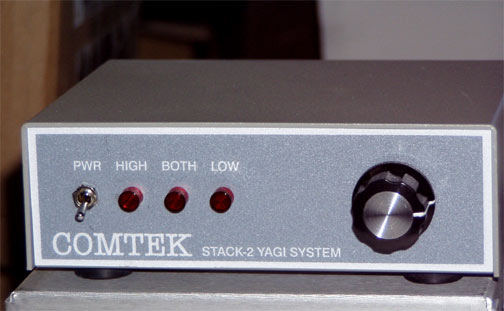
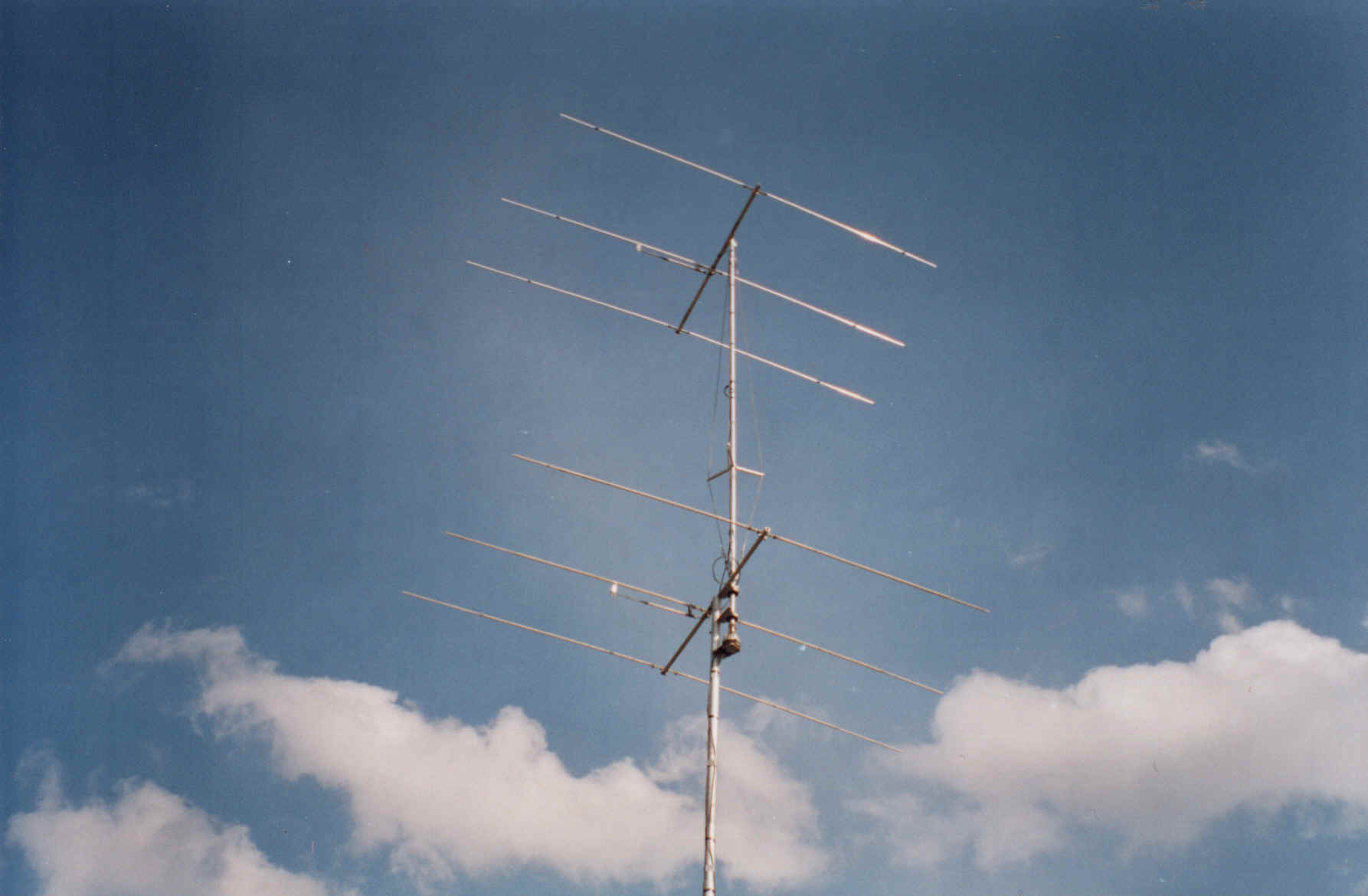
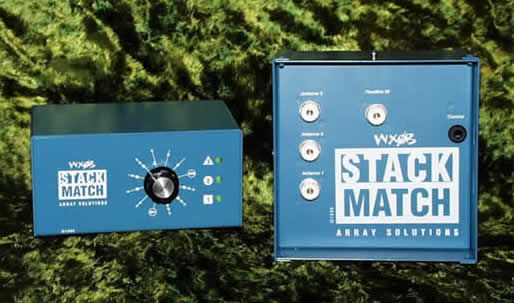
ARRAY SOLUTIONS (antenna products)------ COMTEK (antenna products) -----microHAM (antenna products)
home
made switch K8CU ------ grantronics
------VE3GK ----- UKSMG
![]()